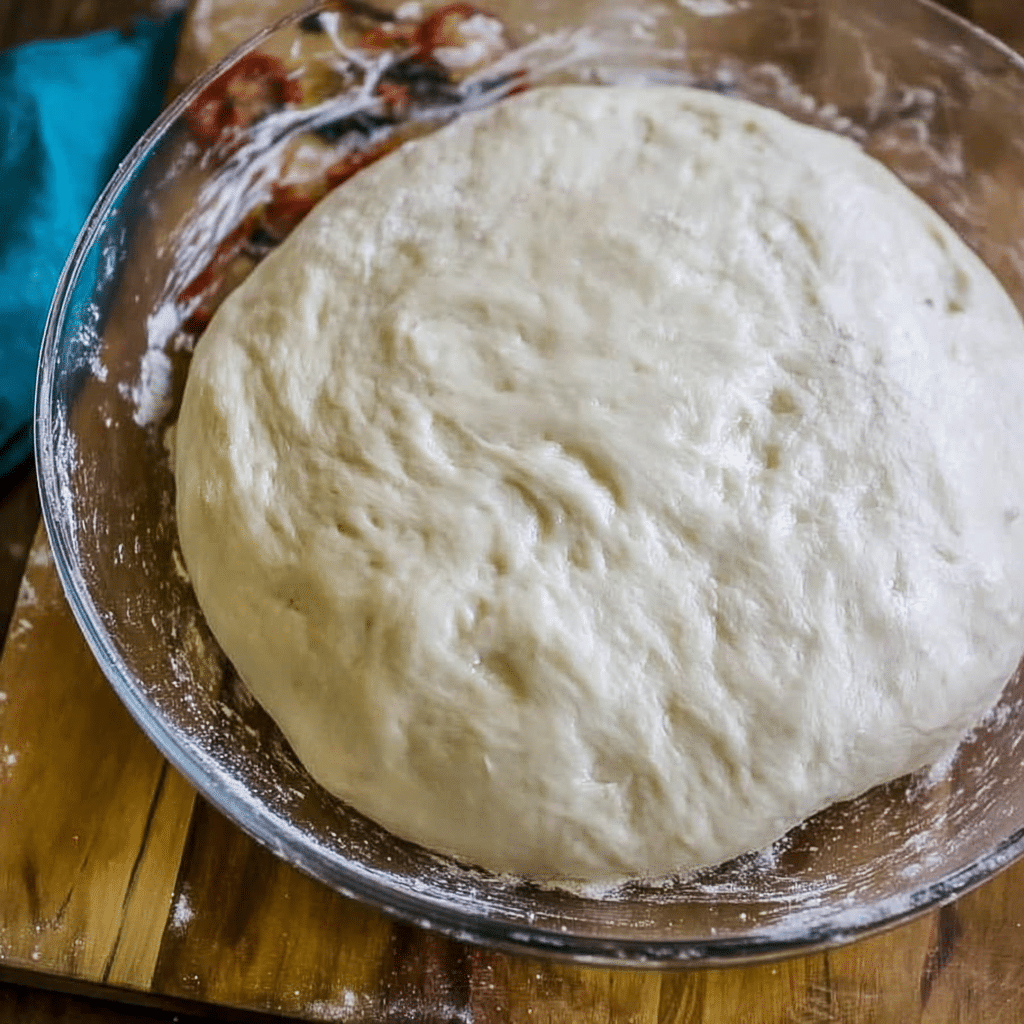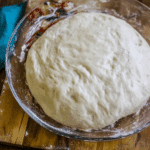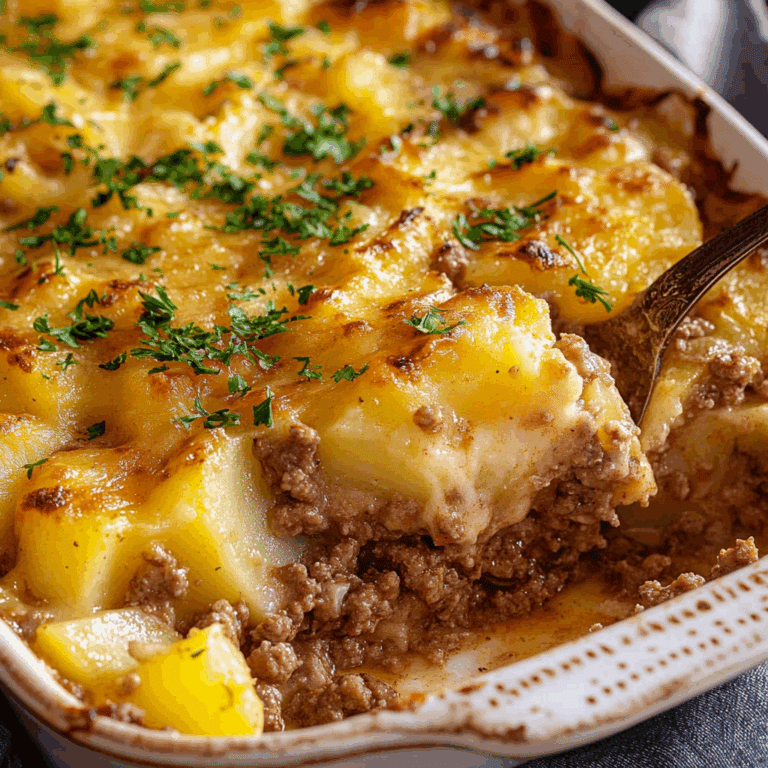How to Make Perfect Homemade Pizza Dough

Making your own Homemade Pizza Dough is one of the most rewarding kitchen experiences you can have. This simple yet magical base transforms everyday ingredients into a soft, chewy crust that holds all your favorite toppings perfectly. Whether you’re hosting a pizza night, craving comfort food, or just want to impress family and friends, mastering this dough will elevate your homemade pizzas to a new level of deliciousness. Let’s dive into the secrets of crafting flawless dough that’s easy to make and a joy to bake.
Why You’ll Love This Recipe
- Easy to Make: Requires just a handful of pantry staples and minimal hands-on time.
- Delicious Texture: Balances a soft interior with a slightly crisp edge for the perfect bite every time.
- Versatile Base: Adapts easily to your favorite toppings and cooking methods, from oven to grill.
- Cost-Effective: Saves money compared to takeout while delivering homemade freshness.
- Customizable: Perfect starting point to experiment with whole wheat, gluten-free, or herb-infused dough variations.
Ingredients You’ll Need
This Homemade Pizza Dough uses simple, everyday ingredients that work together to create the ideal blend of flavor, texture, and color. Each component plays a vital role in making your dough soft, elastic, and beautifully golden after baking.
- All-Purpose Flour: Provides structure and chewiness; you can substitute bread flour for extra elasticity.
- Warm Water: Activates the yeast and helps develop gluten for good texture.
- Active Dry Yeast: Leavens the dough, causing that perfect rise and airy crumb.
- Olive Oil: Adds richness and tenderizes the dough, contributing to a crisp crust.
- Sugar: Feeds the yeast and enhances browning for a beautiful crust color.
- Salt: Balances flavors and strengthens gluten development for elasticity.
Variations for Homemade Pizza Dough
Feel free to get creative with your dough! It’s easy to adjust this base recipe for different dietary needs, flavors, or textures that match your personal taste or ingredient availability.
- Whole Wheat Dough: Swap half or all of the flour with whole wheat for a nuttier, heartier crust.
- Gluten-Free Version: Use a gluten-free flour blend and xanthan gum for structure, great for sensitive diets.
- Herb and Garlic Infusion: Add dried herbs like oregano or minced garlic into the dough for extra flavor.
- Thin Crust Style: Roll the dough thinner and bake at a higher temperature for a crispier bite.
- Cheesy Dough: Incorporate a bit of grated parmesan into the dough for subtle cheesy notes.

How to Make Homemade Pizza Dough
Step 1: Activate the Yeast
Start by dissolving the active dry yeast and sugar in warm water. Let it sit for about 5 to 10 minutes until it becomes foamy, signaling the yeast is alive and ready to work its magic.
Step 2: Mix Dry Ingredients
In a large bowl, combine the flour and salt. These dry ingredients form the basis of your dough’s structure and flavor foundation.
Step 3: Combine Wet and Dry
Pour the yeast mixture and olive oil into the bowl with the flour and salt. Stir until the dough starts to come together in a shaggy ball.
Step 4: Knead the Dough
Transfer the dough onto a floured surface and knead vigorously for about 8 to 10 minutes. The dough should become smooth, elastic, and slightly tacky but not sticky.
Step 5: First Rise
Place the kneaded dough in a lightly oiled bowl, cover it with a damp cloth or plastic wrap, and leave it to rise in a warm spot for 1 to 1.5 hours until it doubles in size.
Step 6: Shape and Second Rise
Punch down the dough to release air, then divide it as needed and shape into pizza rounds or balls. Allow to rest and rise for another 20 to 30 minutes before shaping into your crust.
Pro Tips for Making Homemade Pizza Dough
- Use Warm Water: Ensure your water is around 105 to 110°F to properly activate yeast without killing it.
- Knead Well: Proper kneading develops gluten, giving you that ideal chewy texture.
- Rest Time is Key: Don’t rush rising times; it builds flavor and airiness.
- Room Temperature Ingredients: Helps with even yeast activation and easy dough handling.
- Preheat Your Oven: A hot oven mimics professional pizza ovens and crisps the crust beautifully.
How to Serve Homemade Pizza Dough
Garnishes
Once baked, top your pizza crust with fresh basil, a drizzle of garlic-infused olive oil, crushed red pepper, or a sprinkle of parmesan cheese to add layers of flavor and aroma that excite the senses.
Side Dishes
Complement your pizza with fresh green salads, roasted vegetables, or a tangy dipping sauce like garlic butter or spicy marinara for a full meal experience.
Creative Ways to Present
Serve your pizza on a rustic wooden board or colorful ceramic plate, pair with a vibrant drink like homemade lemonade, and cut into creative shapes like squares or mini pizzas for sharing fun and style.
Make Ahead and Storage
Storing Leftovers
Wrap leftover dough tightly in plastic wrap or store in an airtight container in the fridge for up to 3 days; bring to room temperature before using again.
Freezing
Homemade pizza dough freezes brilliantly — shape into balls, cover tightly in plastic wrap and then foil, and freeze for up to 3 months. Thaw in the fridge overnight before shaping.
Reheating
To reheat baked pizza, warm in a preheated oven at 375°F for 5–7 minutes to revive a crisp crust rather than microwaving, which can make it soggy.
FAQs
Can I use instant yeast instead of active dry yeast?
Yes, instant yeast can be used in this recipe. You can mix it directly with dry ingredients and slightly reduce the amount of warm water since it activates faster.
How thick should I roll out my homemade pizza dough?
It depends on your preference; 1/8 to 1/4 inch thickness offers a nice balance between chewy and crispy, but thinner dough will crisp more and thicker will be softer inside.
Why is my dough sticky? Is it a problem?
A slightly sticky dough is normal and signals good hydration; just flour your hands and work surface lightly and avoid adding too much flour, which can dry out the dough.
Can I prepare dough without a stand mixer?
Absolutely! You can mix by hand and knead on a clean surface—it might take a bit more elbow grease but results are just as good.
How long can I let my dough rise?
The first rise typically takes 1 to 1.5 hours, but you can slow ferment the dough in the fridge for up to 24 hours to develop more flavor and texture complexity.
Final Thoughts
There’s something truly special about pulling warm, homemade pizza from the oven, especially when it starts with your own perfectly balanced Homemade Pizza Dough. This recipe is approachable for beginners yet impressive enough to satisfy any pizza lover. Give it a try, experiment with your favorite toppings, and watch your pizza nights become the highlight of the week!
Related Posts
- How to Make Crispy Parmesan Crusted Chicken
- Easy Garlic Parmesan Chicken Pasta Casserole Recipe
- Easy Ranch Rotini Bake with Beef and Corn Recipe
Homemade Pizza Dough
This Homemade Pizza Dough recipe is simple to make with basic pantry ingredients and results in a soft, chewy crust with a slightly crisp edge. Perfect for customizable pizzas whether baked in the oven or grilled, it offers a versatile, cost-effective, and delicious base ideal for various dietary preferences including gluten-free adaptations.
- Prep Time: 15 minutes
- Cook Time: 10-15 minutes
- Total Time: 1 hour 30 minutes to 2 hours
- Yield: 2 medium pizzas 1x
- Category: Appetizers
- Method: Baking
- Cuisine: Italian
- Diet: Gluten Free (if using gluten-free flour blend and xanthan gum)
Ingredients
Main Ingredients
- 3 1/2 cups all-purpose flour (can substitute bread flour for extra elasticity)
- 1 1/4 cups warm water (105-110°F)
- 2 1/4 teaspoons active dry yeast (1 packet)
- 2 tablespoons olive oil
- 1 teaspoon sugar
- 1 1/2 teaspoons salt
Instructions
- Activate the Yeast: Dissolve the active dry yeast and sugar in the warm water. Let the mixture sit for 5 to 10 minutes until it becomes foamy, indicating the yeast is active and ready.
- Mix Dry Ingredients: In a large bowl, combine the flour and salt. These provide the structure and flavor foundation of the dough.
- Combine Wet and Dry: Pour the yeast mixture and olive oil into the bowl with the flour and salt. Stir until the dough starts to form a shaggy ball.
- Knead the Dough: Turn the dough onto a floured surface and knead vigorously for 8 to 10 minutes until smooth, elastic, and slightly tacky but not sticky.
- First Rise: Place the dough in a lightly oiled bowl, cover with a damp cloth or plastic wrap, and let it rise in a warm spot for 1 to 1.5 hours until doubled in size.
- Shape and Second Rise: Punch down the dough to release air, divide as needed, shape into rounds or balls, and let rest for another 20 to 30 minutes before shaping into your pizza crust.
Notes
- Use warm water (105-110°F) to properly activate yeast without killing it.
- Kneading well develops gluten for ideal chewy texture.
- Allow adequate rest and rise time to build flavor and airiness.
- Use room temperature ingredients for even yeast activation and easier handling.
- Preheat oven to high temperature for a crisp crust that mimics professional pizza ovens.
- Leftover dough can be refrigerated up to 3 days or frozen up to 3 months.
- To reheat pizza, warm in a preheated oven at 375°F for 5–7 minutes to maintain crispness.
Nutrition
- Serving Size: 1/8 of dough (approx.)
- Calories: 180
- Sugar: 1g
- Sodium: 300mg
- Fat: 4g
- Saturated Fat: 0.5g
- Unsaturated Fat: 3.5g
- Trans Fat: 0g
- Carbohydrates: 32g
- Fiber: 1g
- Protein: 5g
- Cholesterol: 0mg
Keywords: pizza dough, homemade pizza, pizza crust, easy pizza dough, gluten free pizza dough, pizza dough recipe, baking






